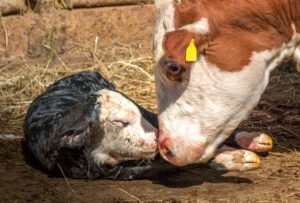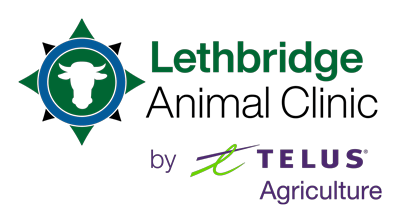How to Safely Deliver a Breech Calf
When it comes to the birthing process of cattle, certain situations can be more challenging than others. A breech birth, where a calf is positioned to come out hind legs first, is one such scenario that requires careful handling. In this blog, we’ll explore the steps and considerations for safely delivering a breech calf. If you’re facing this situation on your farm, Lethbridge Animal Clinic in Lethbridge, Alberta, is here to assist. Our experienced team can provide guidance and support. Feel free to reach out to us at (403) 327-4150 for advice or to schedule an appointment with a skilled large animal veterinarian.

What is a Breech Birth?
A breech birth in cattle occurs when the calf is positioned in the womb in a way that is not ideal for standard delivery. This can include positions where the hind legs or buttocks are set to come out first, instead of the head. It’s important to understand the risks and challenges associated with this type of birth to ensure the safety of both the calf and the mother.
Signs of a Breech Birth
Farmers and veterinarians can often identify a breech birth through various signs. These may include abnormal positioning felt during a physical examination or observed through ultrasound. Being aware of these signs can help you prepare for a breech delivery.
Preparing for a Breech Delivery
As soon as you suspect a breech birth, you need to contact a veterinarian. Breech births in cattle can quickly become complicated, and the expertise of a vet is invaluable in such situations. Your vet can assess the situation, determine the best course of action, and provide the necessary equipment and assistance to ensure the best odds of successful calving.
Preparing the Environment
A calm, clean, and secure environment is vital for a successful breech delivery. Ensure the birthing area is spacious enough to accommodate the cow comfortably and allow easy access for the veterinarian. Cleanliness is key to prevent infections, so sanitize the area thoroughly. Adequate lighting is also necessary for the vet to see and assess the situation.
Mental and Physical Preparation
Breech deliveries can be stressful for both the cow and the farmer. Staying calm and prepared can make all the difference. Having a clear plan and knowing the steps to take when a breech birth occurs can help to reduce anxiety and improve the outcome.
The Process of Delivering a Breech Calf
Your veterinarian will initially examine the cow to confirm the position of the calf. They may use techniques like gentle external palpation or an ultrasound. Once a breech position is confirmed, the vet will decide whether to attempt to reposition the calf or proceed with delivery in the current position.
Techniques for Delivery
If the calf can be safely repositioned, the vet may use gentle manipulation techniques. This requires skill and care to avoid distressing the cow or injuring the calf. If repositioning isn’t possible or safe, the vet will assist in delivering the calf in its breech position. This may involve using specialized equipment like obstetrical chains or calf pullers. These tools must be used with precision and care to ensure the safety of both the calf and the cow.
Continuous Monitoring
Throughout the delivery, continuous monitoring is essential. The vet will keep a close eye on the cow’s vital signs and the progress of the delivery, making adjustments as needed to ensure the safest possible birth.
Post-Delivery Care
Once the calf is delivered, immediate attention is required. The vet will check the calf for any signs of distress or health issues. Ensuring the calf starts breathing normally is a top priority. The mother cow will also be examined for any injuries or complications resulting from the breech birth.
Monitoring Health and Recovery
In the days following the delivery, it’s important to closely monitor both the calf and the cow. Watch for signs of good health in the calf, such as feeding normally and showing active behavior. The mother should be monitored for any signs of infection or complications from the birth. Regular checkups by the vet can help ensure a smooth recovery.
Importance of Nutrition and Hygiene
Proper nutrition and hygiene are also critical after a breech delivery. The cow will need a diet that supports recovery and lactation. The calf also requires appropriate nutrition, either from the mother or through bottle-feeding if necessary. Keeping the environment clean and hygienic helps prevent infections and promotes good health for both mother and calf.
The Role of Lethbridge Animal Clinic
At Lethbridge Animal Clinic, our team has extensive experience in handling breech deliveries and other complications. We can provide the necessary assistance and support to ensure a safe delivery for your cattle.
If you’re expecting a calf or facing a potential breech birth, don’t hesitate to contact us. Call Lethbridge Animal Clinic at (403) 327-4150 to schedule an appointment with a veterinarian or discuss any concerns you may have.
